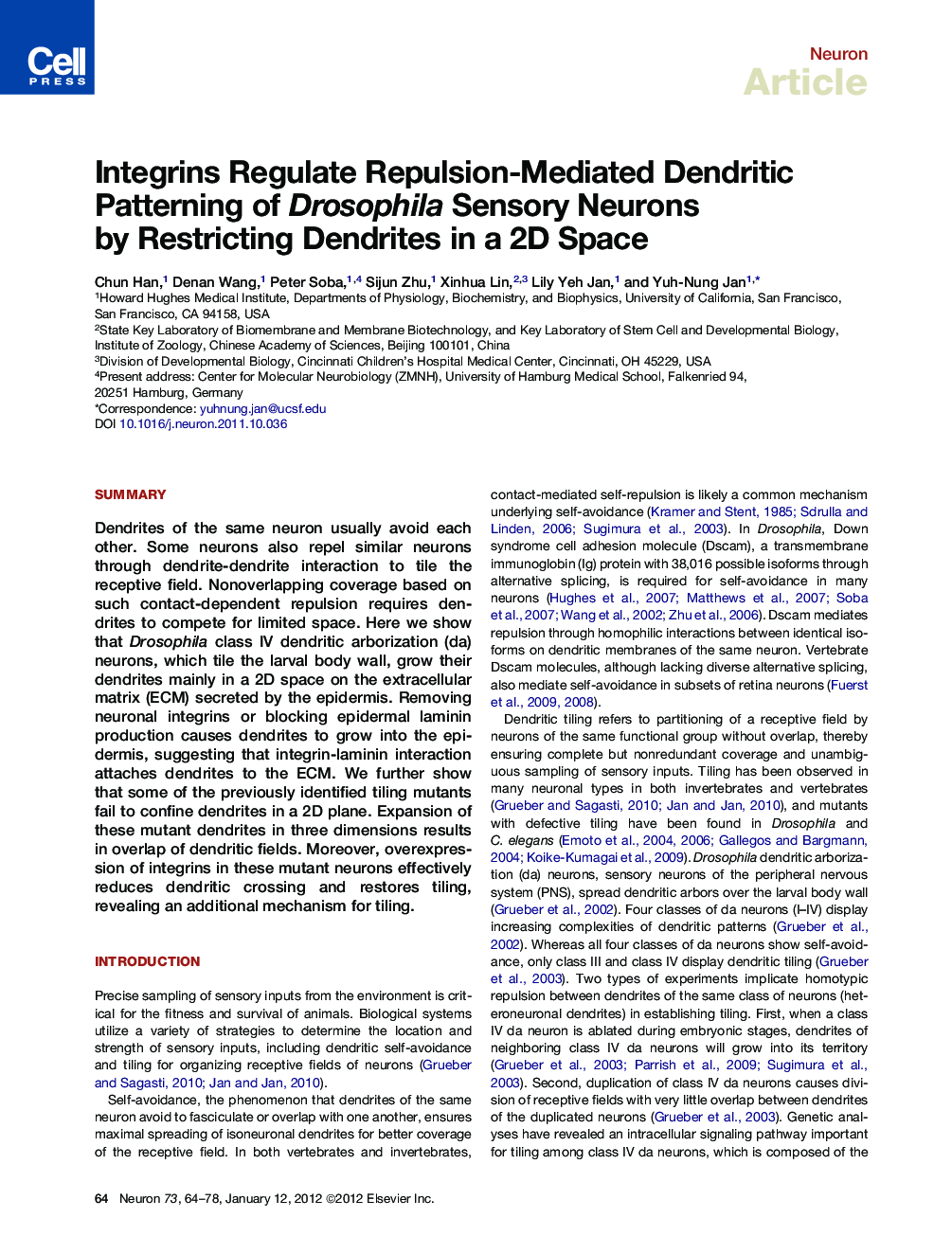| Article ID | Journal | Published Year | Pages | File Type |
|---|---|---|---|---|
| 4321512 | Neuron | 2012 | 15 Pages |
SummaryDendrites of the same neuron usually avoid each other. Some neurons also repel similar neurons through dendrite-dendrite interaction to tile the receptive field. Nonoverlapping coverage based on such contact-dependent repulsion requires dendrites to compete for limited space. Here we show that Drosophila class IV dendritic arborization (da) neurons, which tile the larval body wall, grow their dendrites mainly in a 2D space on the extracellular matrix (ECM) secreted by the epidermis. Removing neuronal integrins or blocking epidermal laminin production causes dendrites to grow into the epidermis, suggesting that integrin-laminin interaction attaches dendrites to the ECM. We further show that some of the previously identified tiling mutants fail to confine dendrites in a 2D plane. Expansion of these mutant dendrites in three dimensions results in overlap of dendritic fields. Moreover, overexpression of integrins in these mutant neurons effectively reduces dendritic crossing and restores tiling, revealing an additional mechanism for tiling.
► Class IV da neuron dendrites are mainly distributed in a 2D space ► Loss of neuronal integrins causes dendrites to grow into the epidermis ► Mutants of the TORC2/Trc pathway fail to confine dendrites in a 2D space ► Integrin overexpression rescues dendritic crossing in mutants of TORC2/Trc pathway
